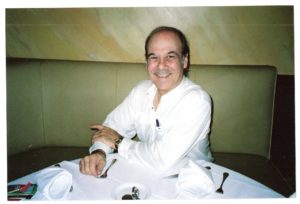Expansion in ST. Augustine
[AdSense-A]
We concluded our last “visit” with the discussion of Mr. Flagler purchasing the Jacksonville, St. Augustine & Halifax River Railroad on December 31, 1885. He did so not to become a railroad magnate, but because the little narrow gauge run-down railroad that Mr. Flagler purchased was in such poor condition that the builders of the Ponce de Leon Hotel could not get the building material they needed to continue the construction in anywhere near approaching a timely manner.
Immediately upon making that purchase, Mr. Flagler began a program of rebuilding and rehabilitation in order to bring the railroad up to a level whereby it could handle the increased traffic and be prepared for future operations. The most important thing that Flagler did was to standard gauge the track increasing the width from three feet to four feet, eight and one-half inches in order that his new railroad could freely interchange with all other American railroads.
Although Flagler had invested in railroads during his years in partnership with John D. Rockefeller and his being one of the principals of Standard Oil, he was not, as he freely admitted, “a railroad man.” Because of his willingness to recognize that shortcoming he received permission from his friend, Henry Bradley Plant, the builder of the railroads in Central Florida and on the state’s west coast, and the owner of a small chain of Florida hotels and several steamboat and steamship lines on the Florida west coast, to offer Plant’s general manager, Joseph R. Parrott, the same position with his new railroad at an equivalent salary and the opportunity to grow.
After a brief discussion, Mr. Parrott accepted, and his name remains enshrined, well over a hundred years later, as one of the great names in Florida history. His imprint upon the predecessor railroads and the Florida East Coast itself remains an important part of the FEC’s history, now 108 years after he died.
After Parrott became Flagler’s railroad vice president the two men became both business and personal friends and spent a good bit of time together, including regular walks in the a-building hotel’s environs along with the conversations relative to both the railroad and the ongoing hotel construction. On one of those walks along King Street in St. Augustine, Mr. Parrott pointed to the south side of that street, directly across from the Ponce de Leon and said to Mr. Flagler, “you know, sir, that while we will fill this new hotel with guests who can afford to pay thirteen and fourteen dollars per night, I wonder how you would feel about constructing a second hotel on that site (pointing to the south side of King Street) so that we may attract those who, while they cannot afford to pay thirteen or fourteen dollars per night can afford to pay eleven or twelve dollars per night.
Mr. Flagler told Mr. Parrott that he would think about the idea and get back with him shortly and two days later he told Mr. Parrott that he felt the idea was sound. Flagler had his contractors, McGuire and Mcdonald, engage the famed architectural firm or Carrere and Hastings for the project and they designed a hotel almost at the level of luxury of the Ponce de Leon, Mr. Flagler naming it the Alcazar. One of the wondrous elements of the hotel was the largest indoor pool ever built as part of a hotel and it became the hotel’s famed natatorium for many years thereafter. When the hotel closed the pool spent some time in disuse until, eventually, the former pool became the Alcazar Antique Mall, with a number of shops selling a variety of antiques and memorabilia until being shut down for renovation two years ago.
Flagler then had two hotels under construction but on one of his walks with Mr. Parrott he noted that yet another hotel, just east of the Alcazar on the same side of the street was under construction. Named Casa Monica, it seemed to fascinate Mr. Flagler, who, one day, announced that he was going to purchase the Casa Monica and rename it Cordova. When Mr. Parrott queried him as to why he was making the purchase, his answer was simple and succinct: “Mr. Parrott, just as you suggested I build the Alcazar in order that we might expand our customer and passenger train base, so it is with the Cordova: I want to attract those who, while they may not be able to afford fourteen or thirteen dollars per night, or twelve or eleven dollars nightly, but who can afford to pay nine or ten dollars per night, I don’t want to lose their patronage, either on our railroad or in our hotels, hence I made what I feel is the right decision. As time proved, of course, it was.
Next time, the St. Augustine hotels open and Florida as a winter resort comes in existence.
[si-contact-form form=’2′]


